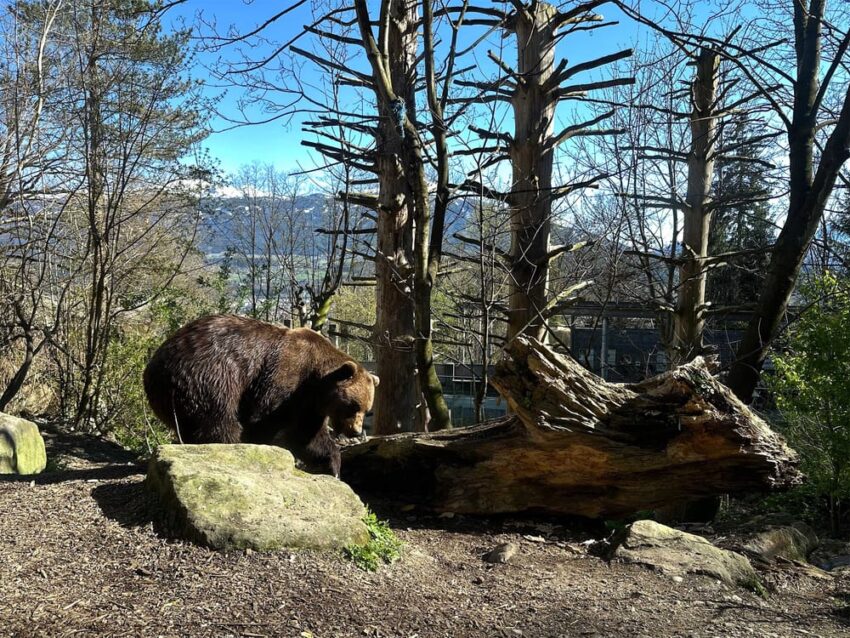Written by John Morris and Stevie Gleason, WheelchairTravel.org, July 17, 2025
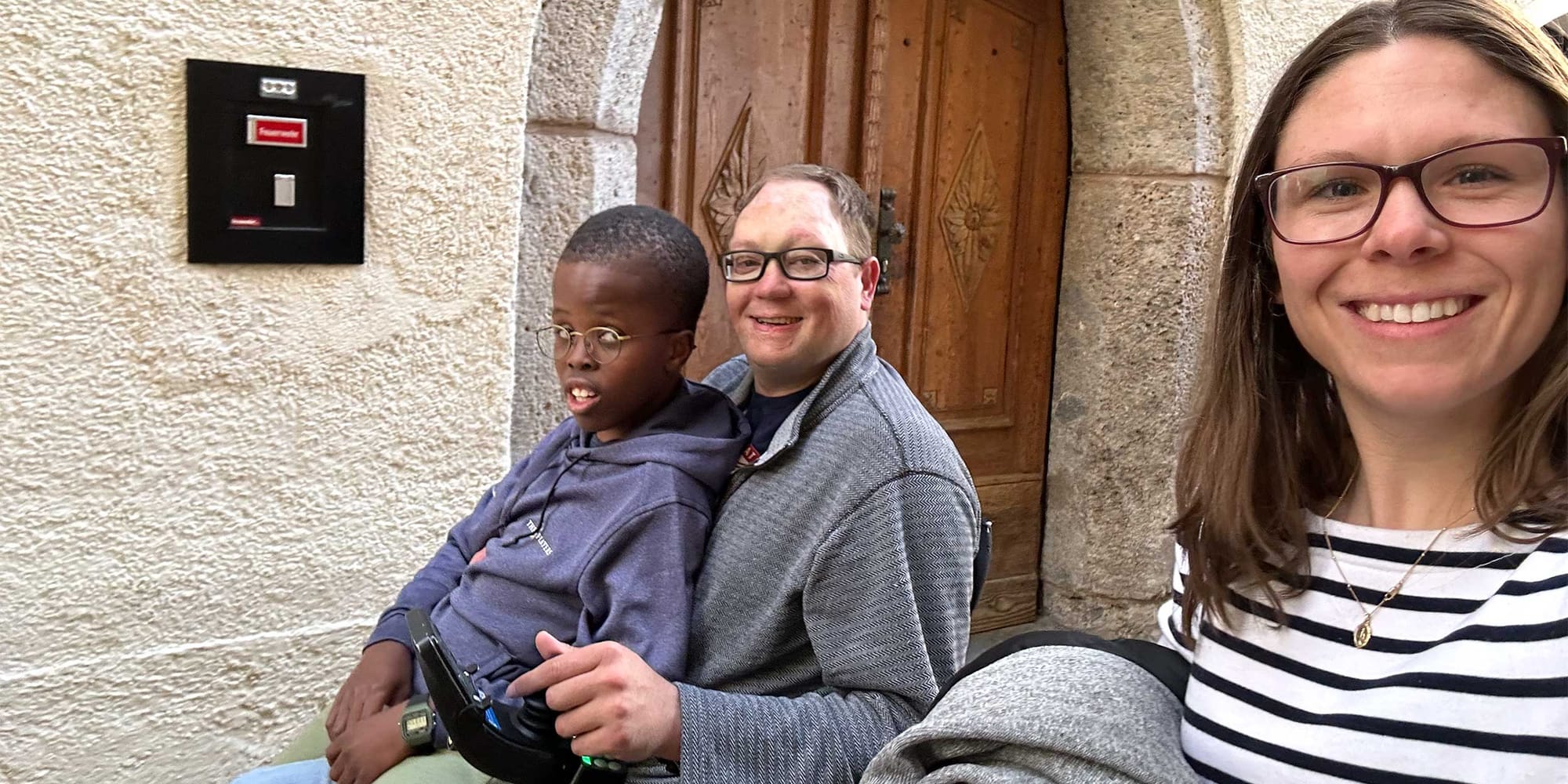
After being unexpectedly separated for multiple days thanks to German rail operator Deutsche Bahn, we were excited to reunite as a family in the picturesque city of Innsbruck, Austria, which sits at an elevation of nearly 2,000 feet amid the northern chain of the Austrian Alps. The city is a popular destination for winter and alpine sports; it hosted the 1964 and 1976 Winter Olympics and the 1984 and 1988 Winter Paralympics.
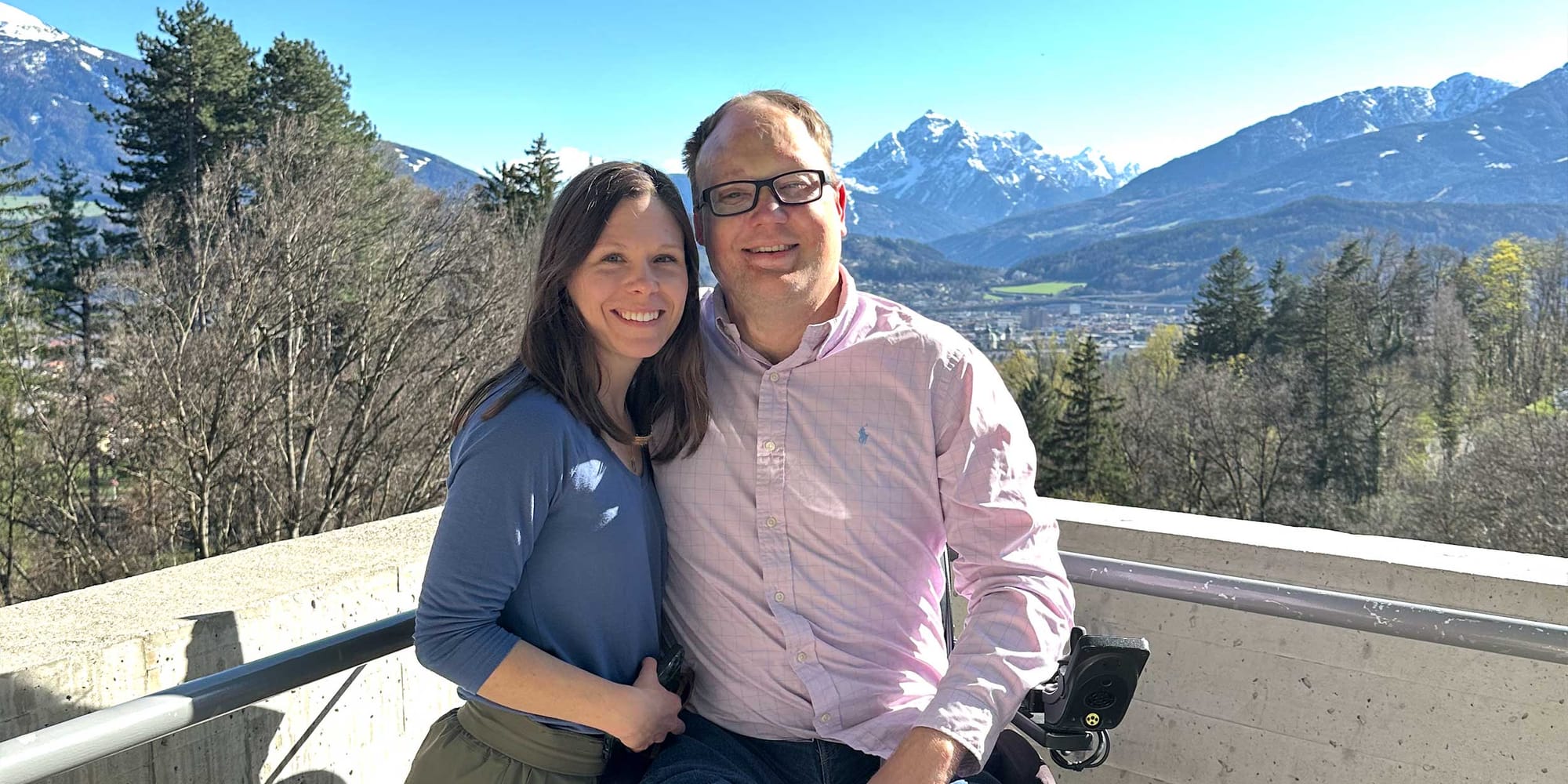
We spent three nights in the city and were joined by family (Stevie’s sister, brother-in-law and their children). It proved to be a memorable weekend filled with fun (and family-friendly) activities, great meals and togetherness.
How we traveled to Innsbruck, Austria
We traveled to Innsbruck separately, from two different cities in Germany. Here’s how we managed to make our way to Austria and reunite:
From Nuremberg, Germany to Innsbruck (John) — My journey started with an InterCity Express (ICE) train ride of about one hour from Nuremberg to Munich. There, I connected to the Railjet service, which is a high-speed train operated by Austrian Federal Railways (ÖBB). The Munich to Innsbruck portion took about two hours, for a total travel time of just over three hours. I had reserved a wheelchair accessible space and there was an accessible toilet onboard.
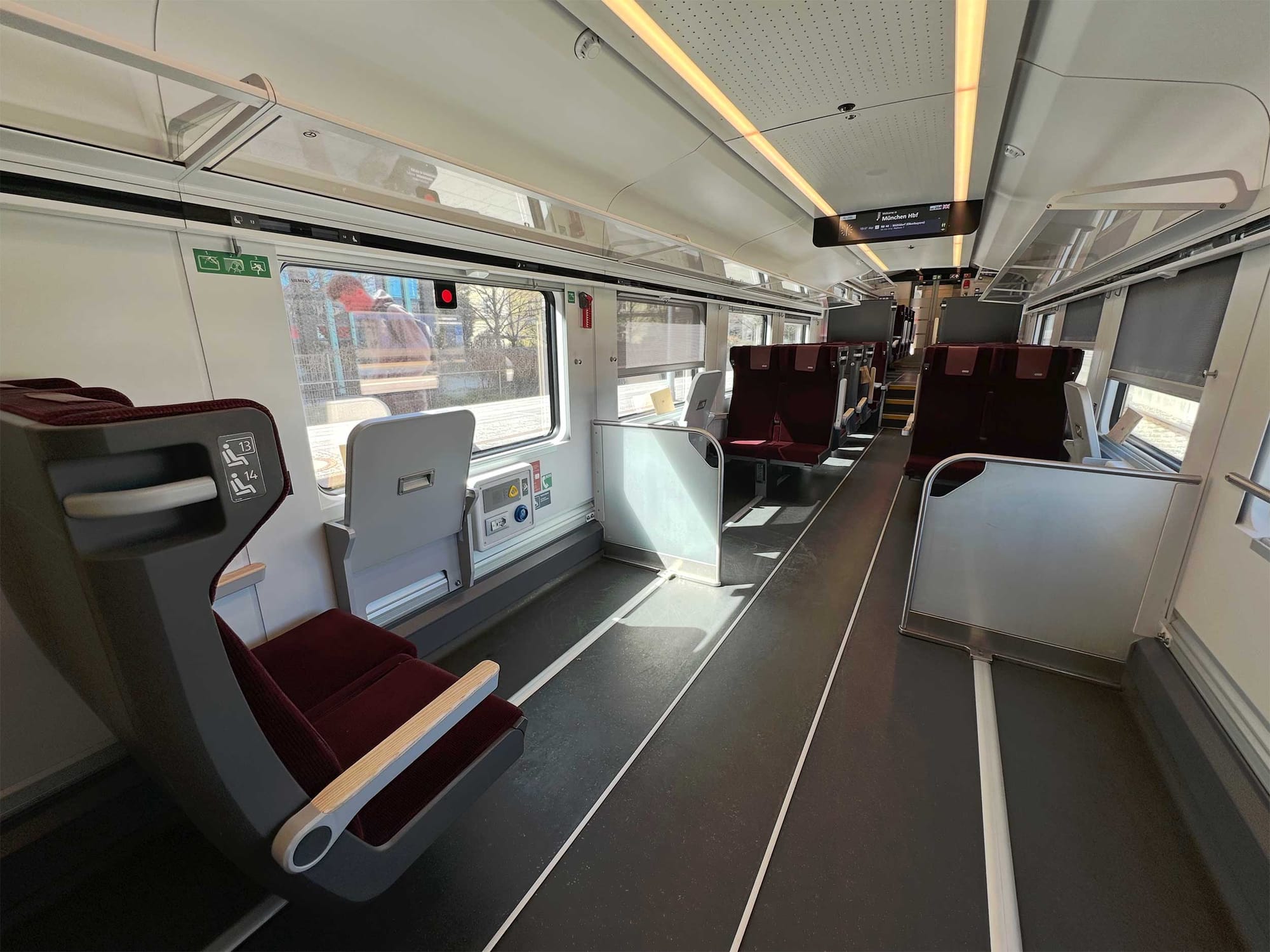
From Weiden, Germany to Innsbruck (Stevie and Robert) — Getting to Innsbruck took a lot of work considering the inaccessibility of the train station in Weiden. The local train we took had no designated wheelchair space. We connected to a more accessible train (Railjet) in Munich, but the wheelchair accessible train car was filled with luggage, so there was nowhere for Robert to get his wheelchair on board. Since he is able to walk, he boarded with my sister and sat with them while I had to stand in between train cars with the wheelchair.
Where we stayed in Innsbruck, Austria
We prioritized finding accommodation in the city center of Innsbruck — our search led us to the AC Hotel Innsbruck, which is part of the Marriott family of hotels. The modern hotel is located just a few blocks from the city’s main train station and within walking distance of the old town.
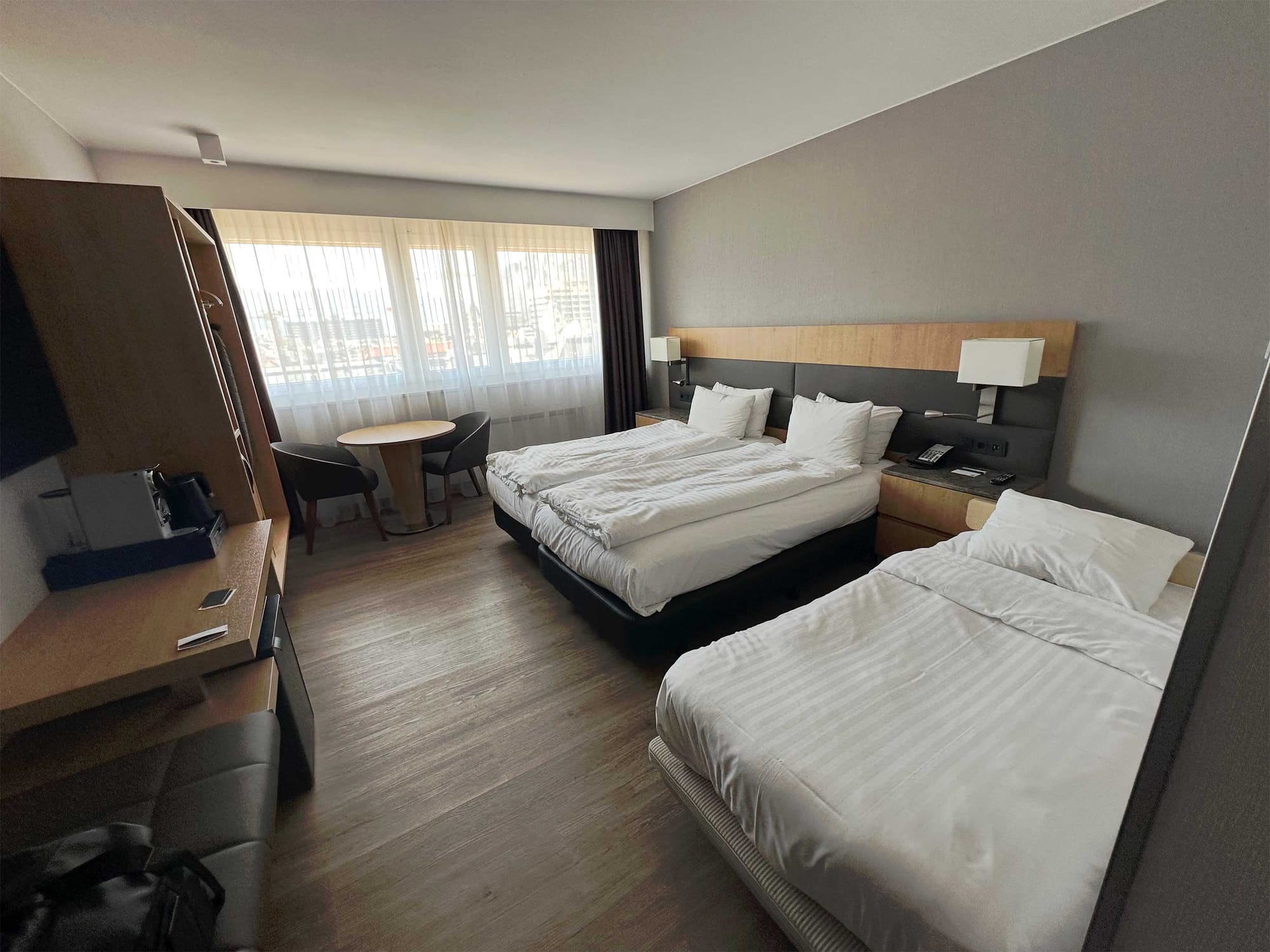
The room featured two double (more like, twin-plus) beds which were accessible on all sides. We needed an extra bed for Robert, and the hotel kindly provided a rollaway bed. The third bed fit easily, but the room was cramped with two wheelchairs maneuvering about!
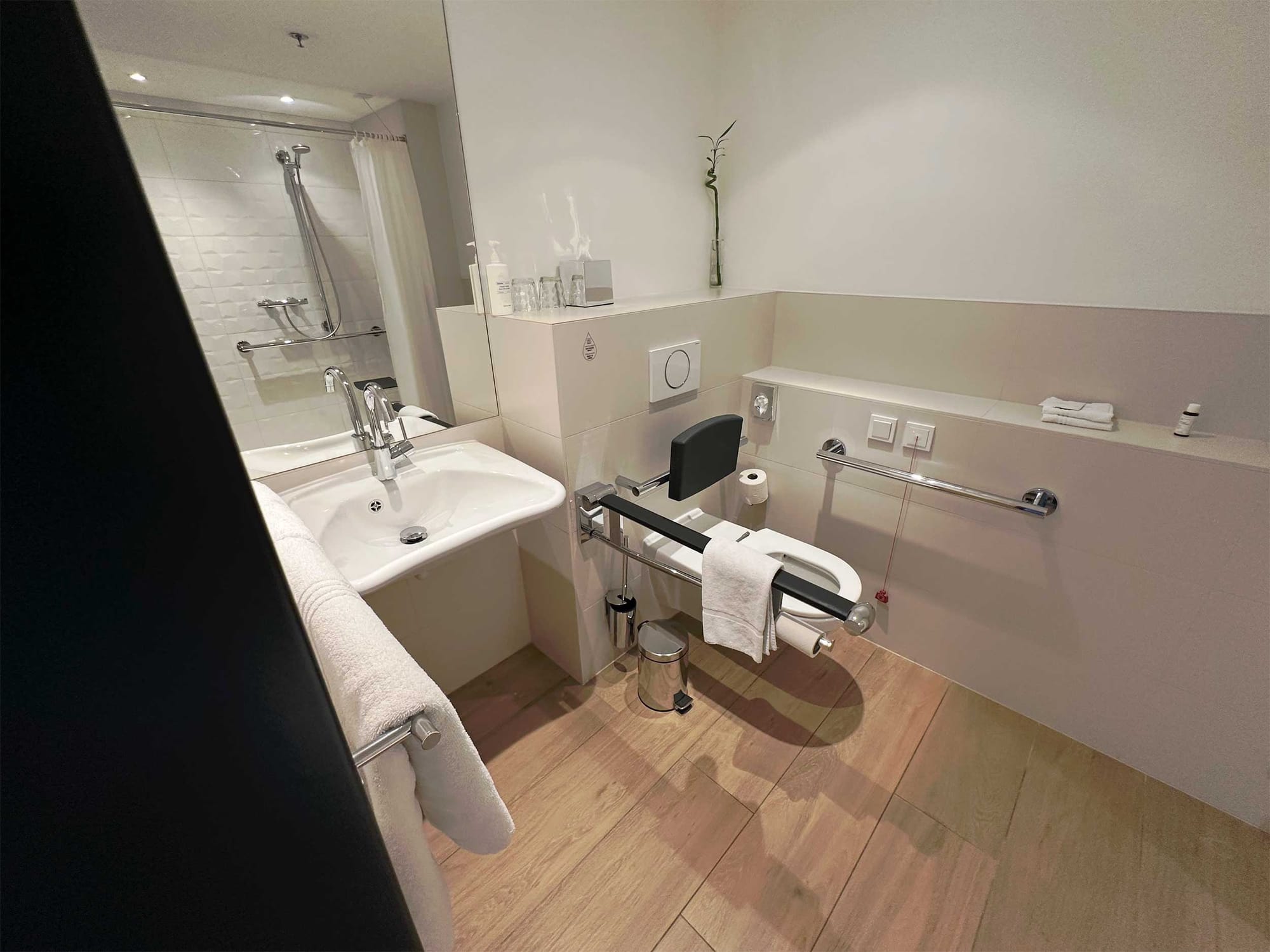
The adapted bathroom with a roll-in shower was excellently designed and met everyone’s needs, with a wall-mounted shower seat, grab bars in the shower and alongside the toilet, and a roll-under sink. The AC Hotel Innsbruck served us well, and we recommend it to any wheelchair user visiting Austria!
What we did in Innsbruck, Austria
Our trip to Innsbruck was a relaxed one — we enjoyed meals in local restaurants, enjoyed wandering the city, stopped for ice cream every afternoon and visited just a handful of attractions. Our goal was to spend quality time together as a family!
Nordkette — Funicular & Cable Car to the “Top of Innsbruck”
Nordkette is a mountain range just north of the City of Innsbruck, and it is accessible via a funicular and cable car that are together referred to as the Nordkettenbahnen.
The funicular or Hungerburgbahn was opened in 2007 and travels from the old town of Innsbruck (Congress station) to Hungerburg, where a transfer to the Nordkette Cable Car is possible. There are two intermediate stops on the funicular, one of which provides access to the Alpine Zoo.
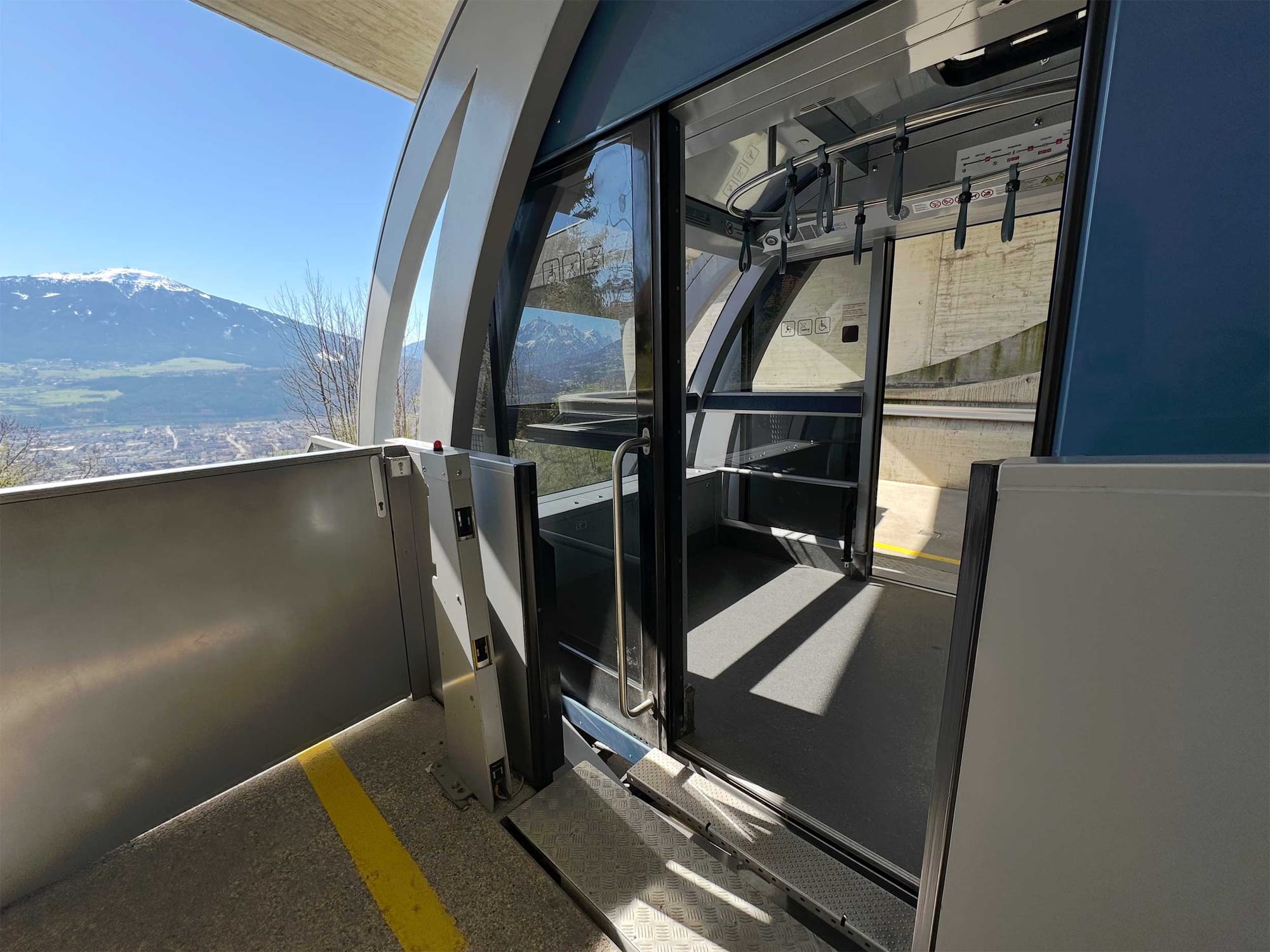
While the funicular has a designated car for wheelchair users with what is effectively level entry, we found many travelers who were unwilling to make space for us at the intermediate stations. We stopped at the zoo on the way down but, when we attempted to continue our return journey, we were forced to split into three groups as the funicular was full (with nondisabled people).
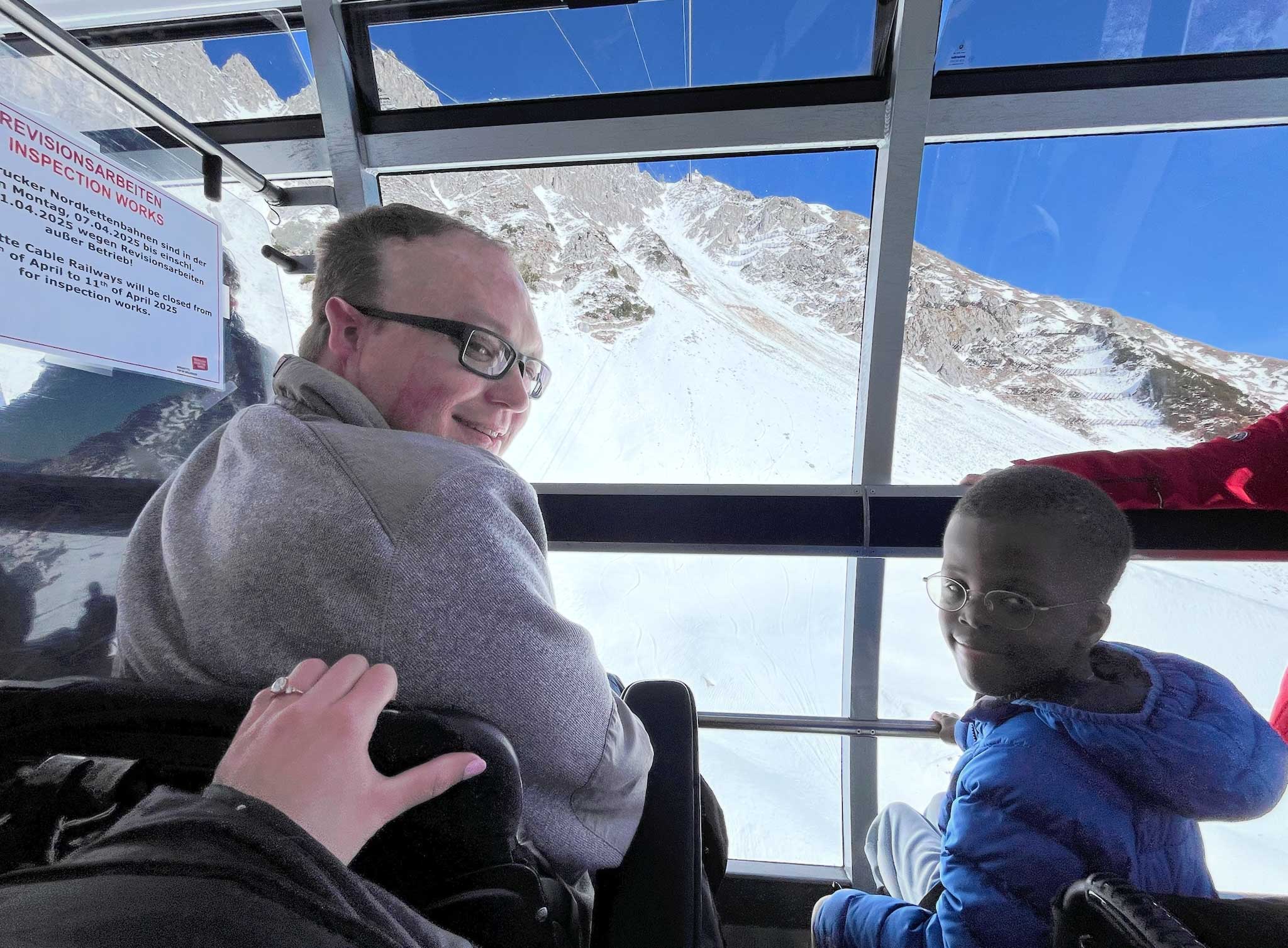
The cable car also had access, but boarding was chaotic — staff opened the gates and a mass of people swarmed the boarding area. We recommend “preboarding” for wheelchair users not only on airplanes, but on cable cars too!
After departing Hungerburg Station, we traveled to Seegrube Station, where there is a wheelchair accessible restaurant, bathrooms and a shop. The uppermost cable car station, Hafelekar, offers the best views from one accessible viewing area. Other viewpoints were located up a set of stairs or via a rocky hill with no lift.
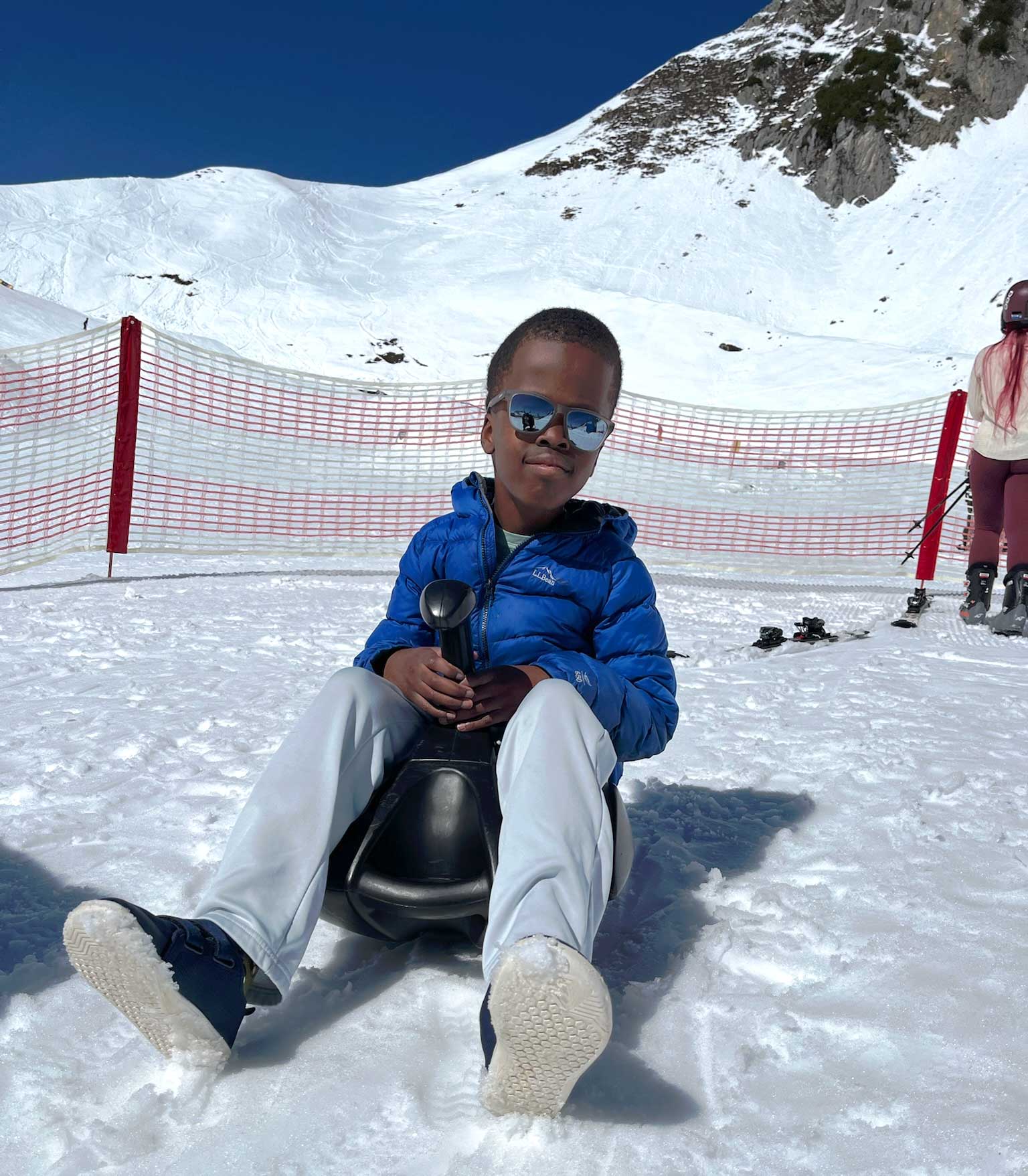
Also at Seegrube Station is a ski and snowboard hill that is open to the public free of charge — Robert took a turn on the children’s sledding hill. Wheelchair users could theoretically participate with assistance from a companion, however there were no specific accessibility accommodations which is a missed opportunity in our opinion.
Additional information can be found on the Nordkette website. Note that wheelchair users receive a companion ticket free of charge, but this is only available at the ticket office (one is located at Congress station).
Alpine Zoo
The Alpine Zoo is marked by hills, hills and more hills — we suppose that is to be expected, given that the zoo is located on the side of a mountain!

Paved pathways led to a majority of the exhibits, but the routes were extremely steep and could not be managed independently with a manual wheelchair. Power wheelchairs will do fine, but you should be careful!
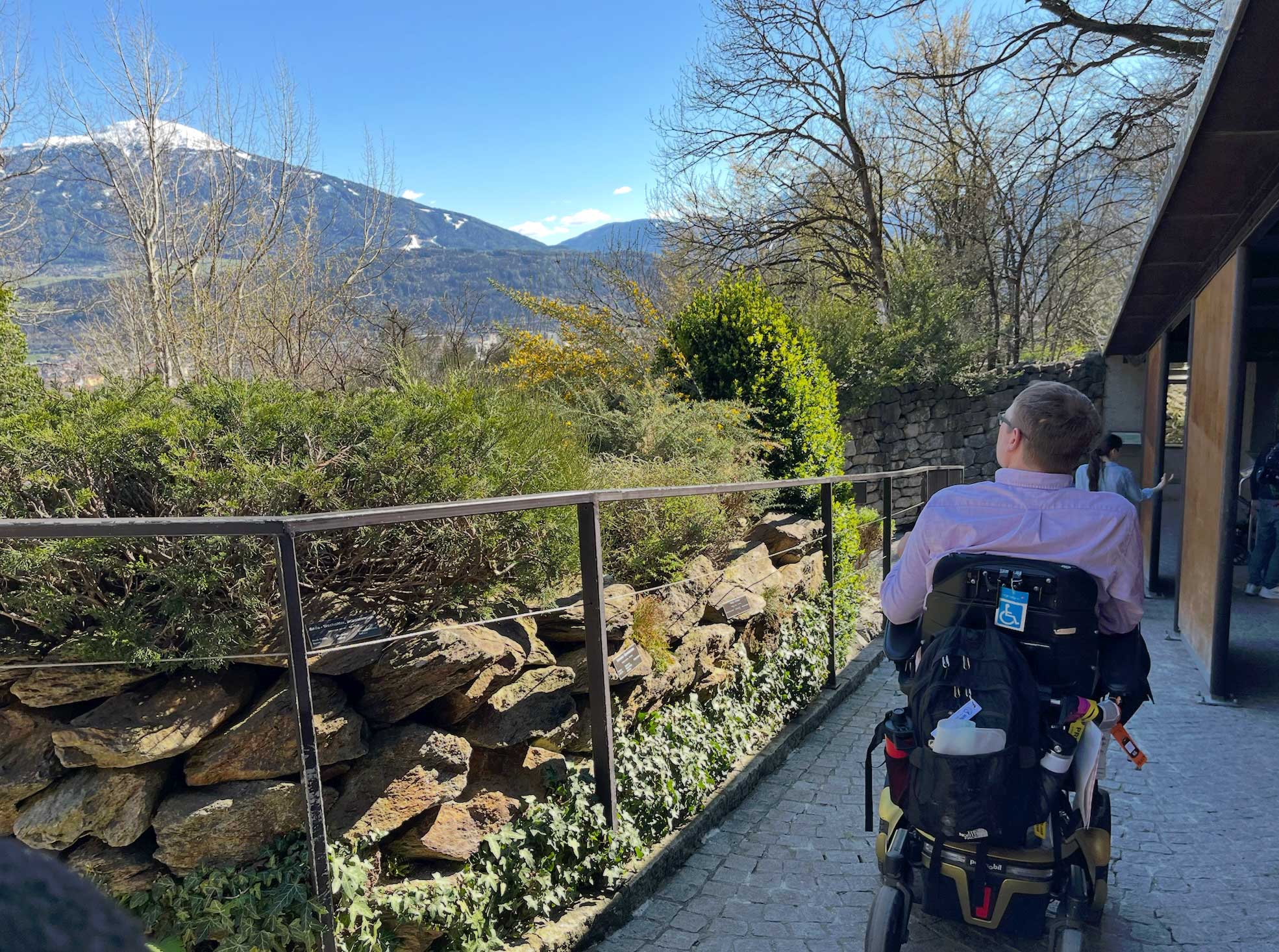
The zoo is home to some 2,000 animals, making it the world’s largest collection of animals from the Alpine region. Among our favorite residents were the brown bear and lynx, though there are also plenty of birds, reptiles and amphibians in the park too!
The setting on the side of a snow-capped mountain was unforgettable, but with Robert’s manual wheelchair, we are not sure it was worth the effort. You can find more information on the Alpenzoo website.
Audioversum Museum
We visited the Audioversum Museum on a whim, looking to fill an empty afternoon, and it proved to be a fun fit for both of us adults and Robert.
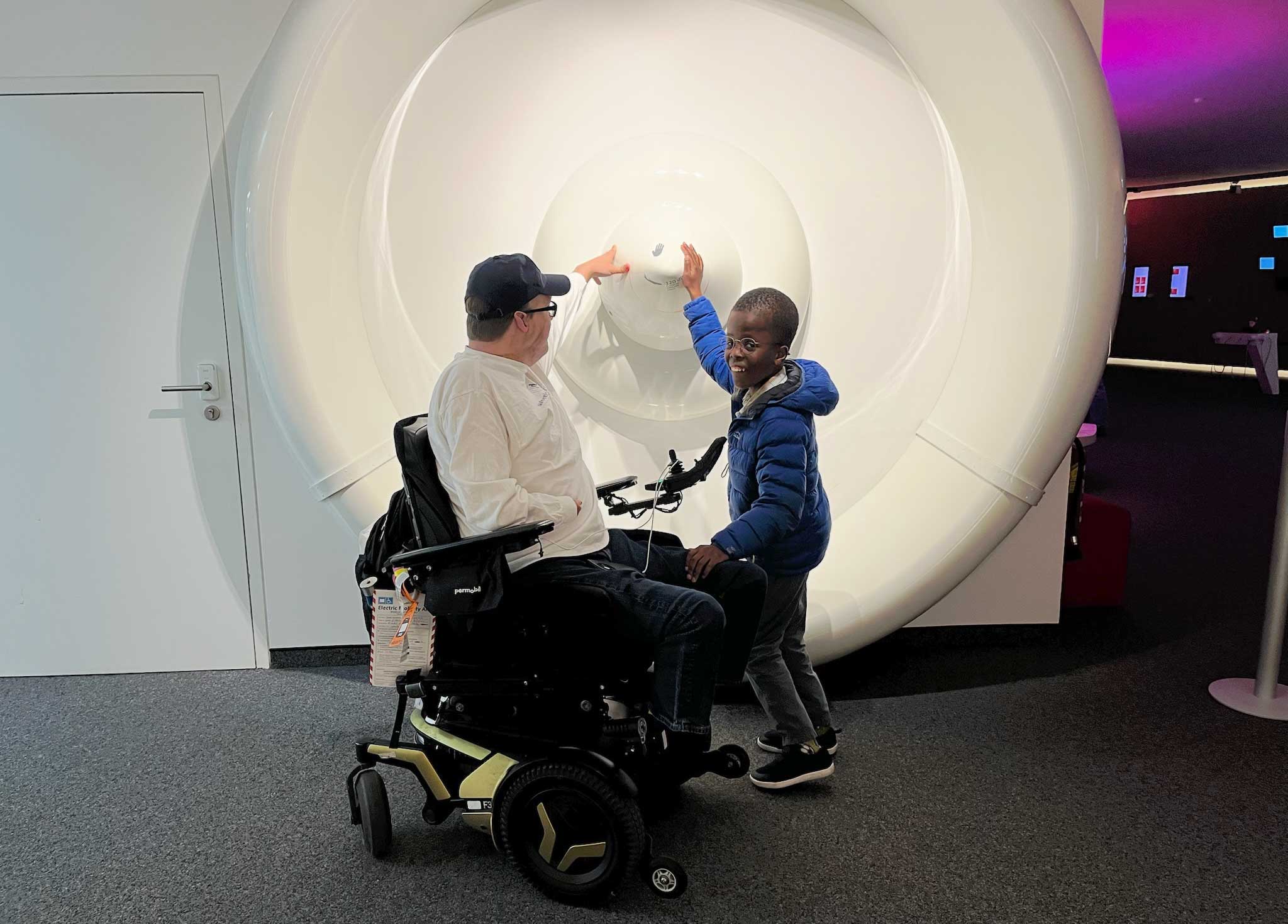
We spent a lot of time exploring the science of sounds through various hands-on activities (yes, that’s John and Robert touching a jet engine replica). The exhibits had space for wheelchair access and didn’t feel cramped.
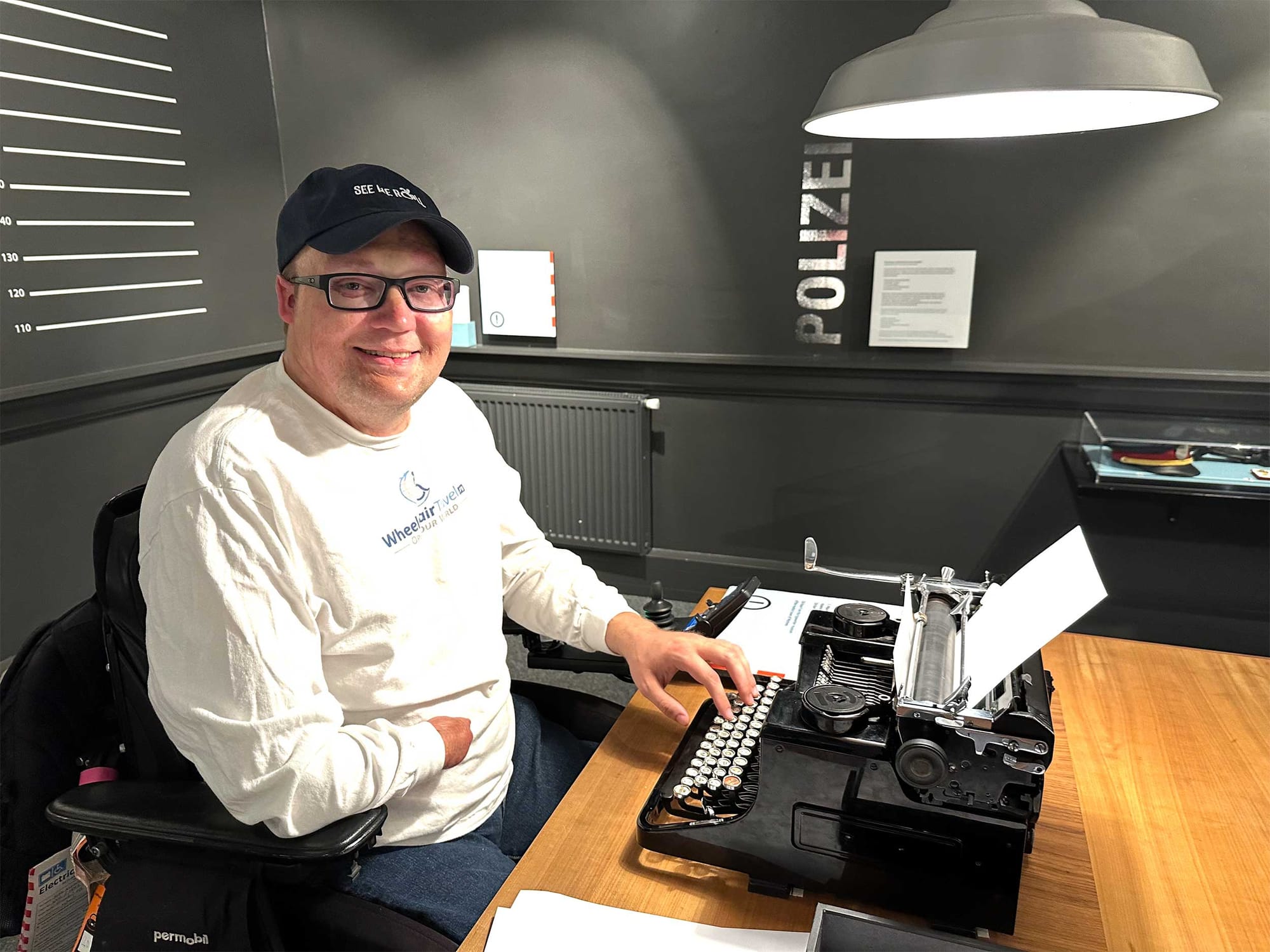
At the conclusion of the tour, we visited a special exhibition on crime scene reconstruction and analyzed fingerprints, sketches and evidence to solve a crime in a fun, interactive environment. We may have started drafting this article on the exhibit’s functioning typewriter! It was a fun and unexpected bonus activity which proved engaging for us all!
Wheelchair accessible transportation in Innsbruck, Austria
Innsbruck is an incredibly walkable city and on this short weekend trip, we did not venture outside of the downtown core save for our funicular and cable car journey to the Nordkette Skyline Park.
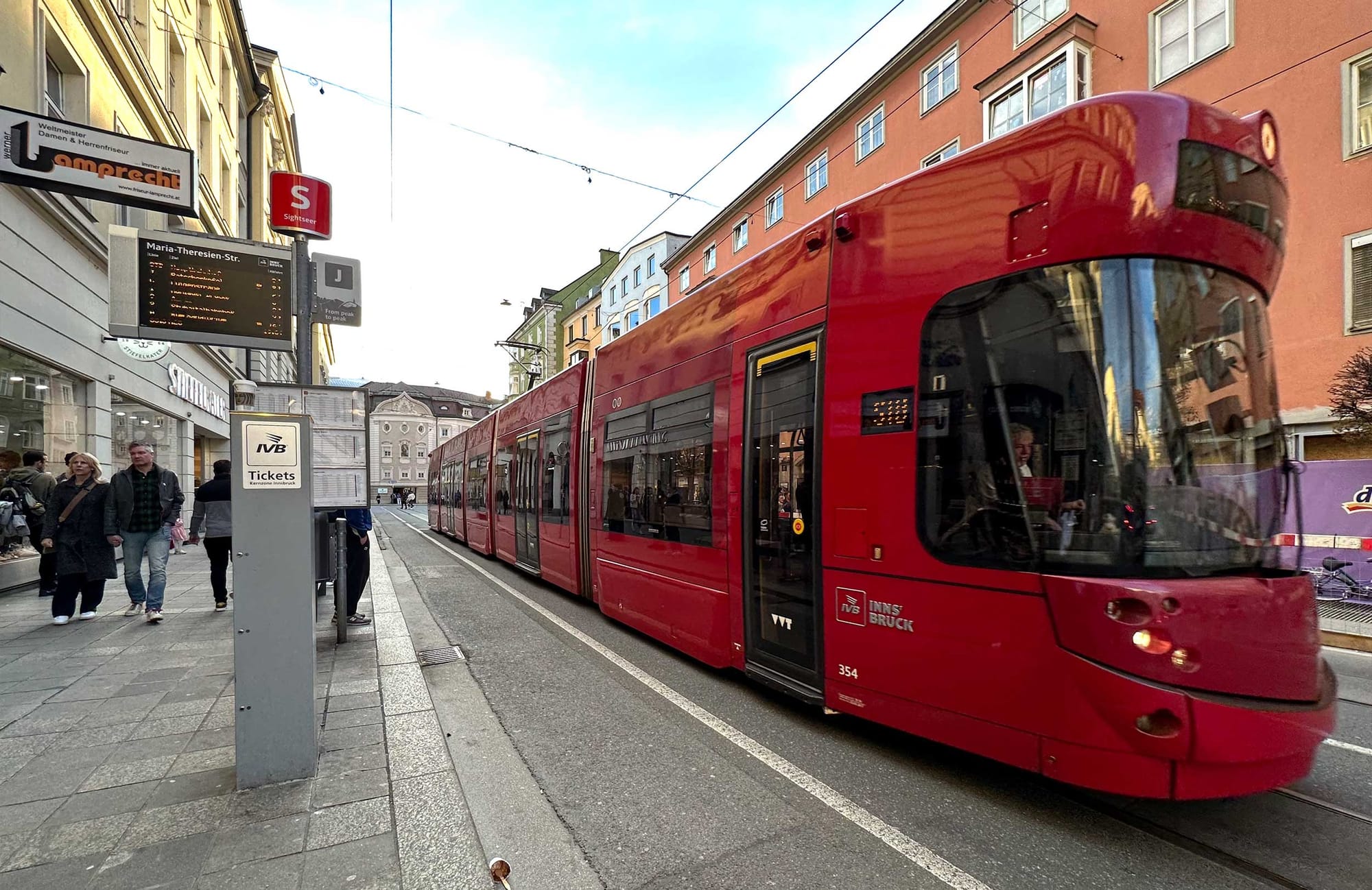
We rode public transit as a novelty (Robert wanted to try the brightly colored and wheelchair accessible trams), and I also noted the availability of wheelchair accessible city buses. Though we used it in a very limited fashion, I found public transit to be accessible and efficient.
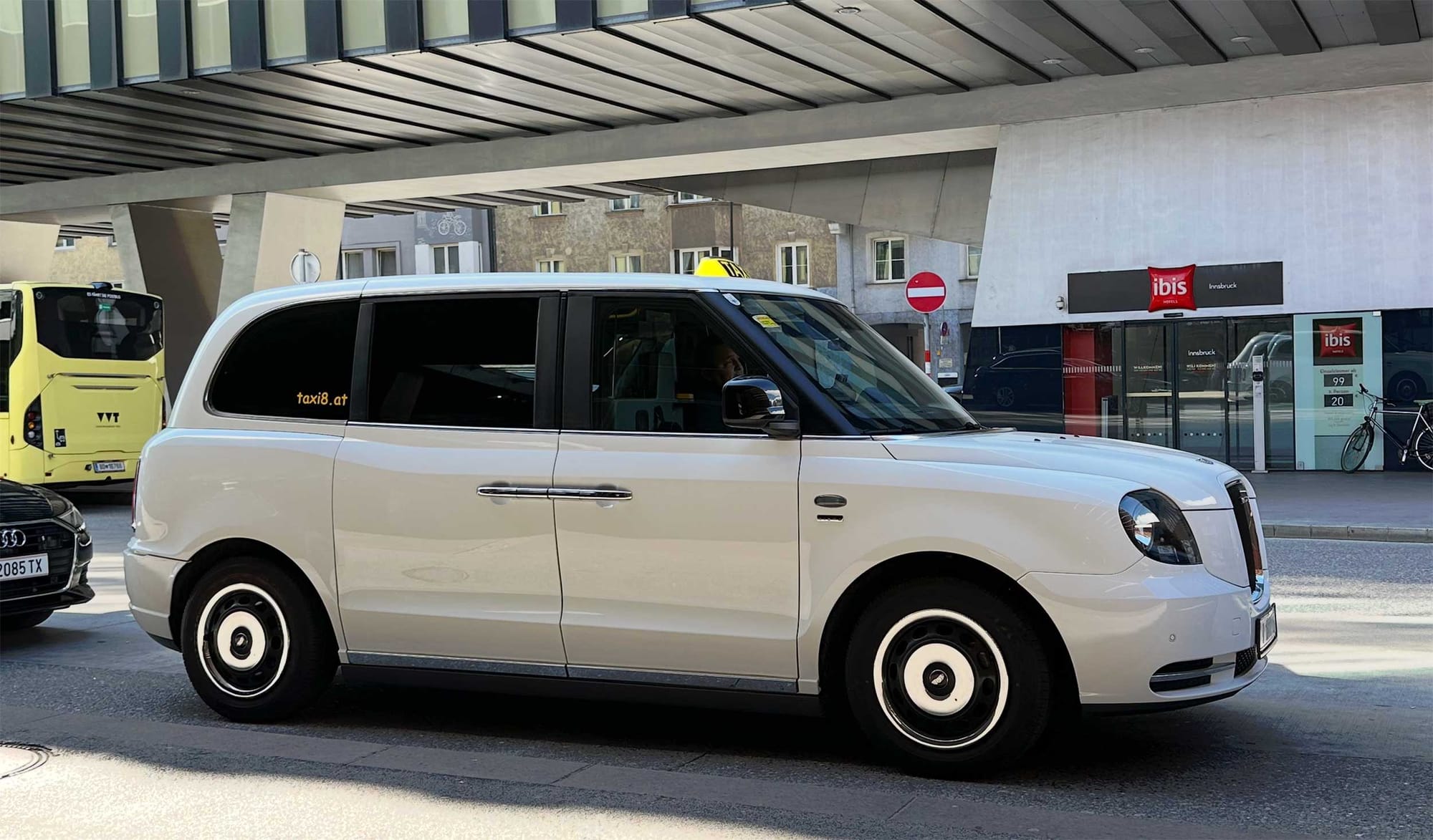
For those needing wheelchair accessible taxi service, check out www.taxi8.at — I noticed one of their sleek London-style cabs outside of the Innsbruck train station.
Final Thoughts
Innsbruck is a picturesque city that proved accessible and easily navigable for our family. We enjoyed exploring the old town, mountainside park and zoo, and the interactive Audioversum Museum, but were disappointed in the lack of adaptive outdoor and alpine adventures. It was a fantastic trip to share with our family, but there is also the potential for Innsbruck to be so much more!
